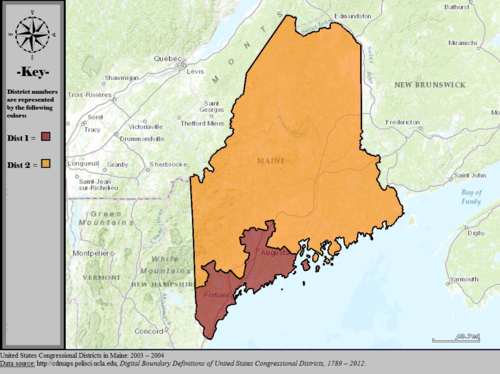
Interactive map version
Maine is divided into two congressional districts, each represented by an elected member of the United States House of Representatives.
Contents
- Current districts and representatives
- Historical and present district boundaries
- Obsolete districts
- See also
- References
Unlike every other U.S. state except for Nebraska, Maine apportions two of its Electoral College votes according to congressional district, making each district its own separate battleground in US presidential elections. Following the 2016 elections, the 2nd district had the sole Republican representative in New England. After 2018, however, the Republican incumbent was ousted by a Democratic challenger. As a result, all of New England was represented by Democrats in the House of Representatives. [1]










